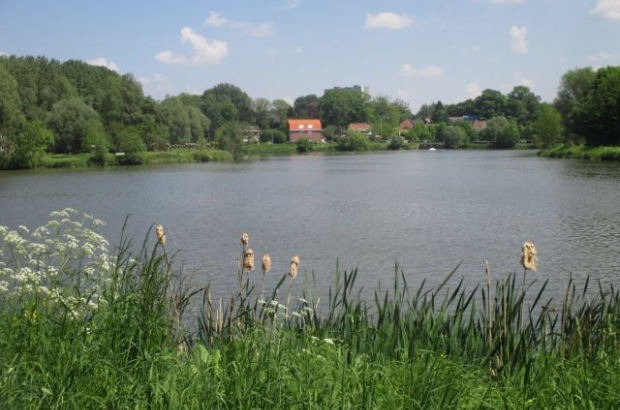- Daily & Weekly newsletters
- Buy & download The Bulletin
- Comment on our articles
Petition launched against proposed swimming project at Anderlecht ponds
Six local residents have launched a petition in a bid to convince the Brussels region and the municipality of Anderlecht that a public swimming project would harm the biodiversity of Neerpede park.
The citizens’ action Sauvegardons Neerpede has so far gathered some 670 signatures opposing the proposed swimming spot. It follows the announcement in December of plans to transform the park into a nature and recreation site, including a natural bathing pond the size of four Olympic swimming pools.
According to the collective, the proposed development would attract too many people to the area, thereby harming its fauna, flora and tranquility. Following their intervention at an Anderlecht council meeting on 23 December, mayor Fabrice Cumps (PS) agreed to organise an information session with Brussels Environment.
One collective member, Yannick, told La Capitale newspaper: “In June, the public inquiry will be launched. We will then have 15 days to object, which is very little.” Referring to other “endangered areas”, such as the Josaphat wasteland and Meylemeersch farm, he accused politicians of being contradictory in their rhetoric. “They want to preserve the environment, yet they degrade what exists in their actions. Making a site rich in biodiversity takes time, but degrading it is done very quickly,” he added.
The Neerpede reconversion is due to start in 2023, with the bathing zone planned to open to the public in 2024. The project would be coordinated and financed by Beliris, the federal body responsible for financing and carrying out public works in Brussels region.
It’s part of the Neerpede Operational Plan, set up in 2020 by Brussels Environment and the municipality of Anderlecht to develop the 200-hectare site, recognised as being of high landscape value.
The largest stretch of water in the park – the middle pond – is destined for bathers. The swimming zone would be limited to the southern area; the central part serving as a lagoon to naturally purify the water. A smaller pond, identified as being of high biodiversity value, would not be accessible to swimmers.
A feasibility study has recommended limiting access to a maximum of 225 bathers at one time. Depending on numbers, the duration time for swimming could be limited to allow as many people as possible to take advantage of the pond.
The swimming pond would be open to the public from May to September. During the winter months, access would be supervised by clubs, with the adjoining recreation area open to the public on a permanent basis.



















